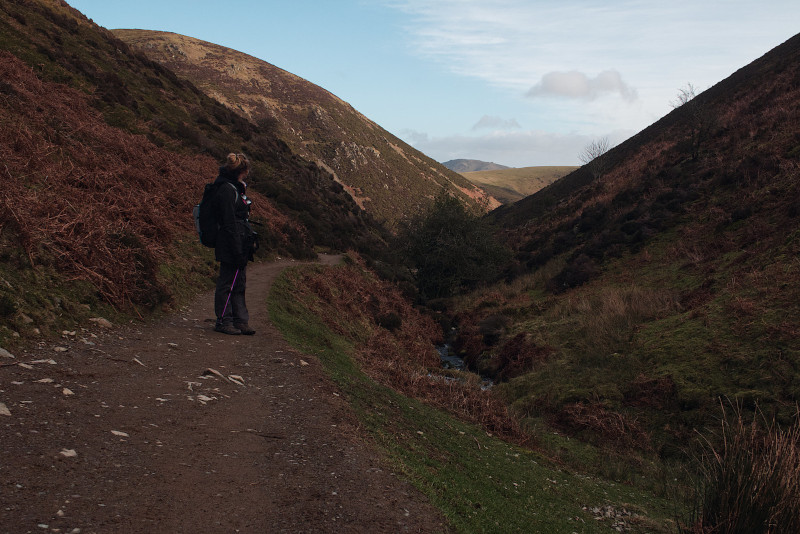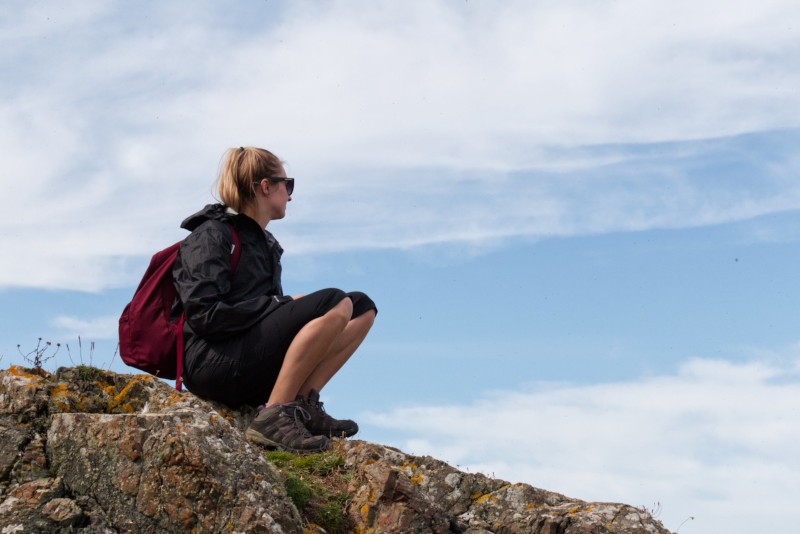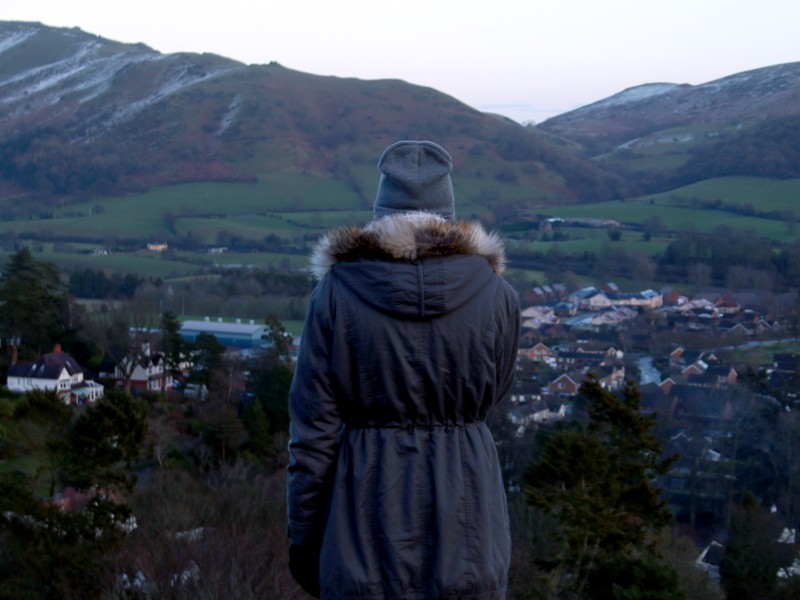There is nothing worse than planning a grand outing with routes prepared and bags packed, only to wake up on the day and discover huge gales, torrential downpours, and negative temperatures. It can be very tempting to throw in the towel but with a little bit of prep work you can save your trip, and although you can't beat blue skies and sunshine on the trails, often the dramatic and gloomy clouds a storm brings can make for some really stunning views. One of my favourite experiences is climbing into the clouds on a snowy day, walking with limited visibility and getting to see a different side to a place not often seen. Of course, because you already have all of the essentials, you shouldn't have any issues setting up your gear and getting out there! This is just a little guide/motivational post to hopefully prevent you from giving up on the trails when the rain is coming down and the wind is howling.
Getting your gear set up
Getting your gear right is always important for any hike but when the weather is bad you really need to make sure everything is just packed and ready. One mistake people tend to make is getting over-dressed for bad weather, it might seem like you need to be as bundled up as possible to keep the cold out but it can often make walking a miserable, sweaty event. You need to dress with a decent base-layer and a solid water-proof outer layer, but when you're getting prepared at home you need to strike the balance so you're actually a little on the colder side when standing still outside. I know how tempting it can be to get fully wrapped up, nice and toasty, but the second you head out rambling you'll become a hot mess. Extra layers should of course be kept in your pack in-case the temperature should drop and if you find yourself feeling cold while on the move you should absolutely throw them on.
Speaking of your pack, obviously only you can decide what size pack you will need for the journey ahead, but make sure you have a rain-cover for it too. You may already have a waterproof bag but that extra layer can really help in the event of a huge downpour, and if you keep anything strapped to the outside then they will be nice and dry too. Waterproof layers for yourself and your pack are generally going to be better than things like umbrellas - an umbrella is great up until the point the wind changes and it becomes useless!
Whatever footwear you decide on should of course be waterproof, but you may want to adjust based on how the conditions have been. First rain of the autumn? Don't worry too much about it, but if you're in the depths of winter and rain has been absolutely bucketing it down for weeks on end it may be worth considering grabbing the bigger boots or wellies. Finally, I always advocate for extra socks but when the weather is especially bad you should pack extra-extra spare socks!
On the trail
First-things-first it may be worth adjusting the trail you're planning to follow to allow for more cover, if you can take a slightly longer route that keeps you in tree cover or has frequent cover from hills and cliff-sides it will make for a much more comfortable trek. Wind can be deceptive, especially on a cold day - if you cannot get extra cover then make sure your extremities are covered, especially your ears which are not only susceptible to the cold, but can get irritated by the constant battering of the wind. It is also worth adjusting the routes for overall difficulty, if the weather is truly bad and your journey was going to be a tough one full of arêtes, cliff faces and scrambles then the smart thing to do is select something a little less perilous. That tough trail can wait for a safer day...

Even though you probably won't be sweating quite as much as you would be in the sun, take breaks as though you were and try to get out of the rain periodically - it can be very psychologically draining to constantly walk in the rain, and it can be very relaxing to watch the rain from cover, ideally with a thermos of something warm. It can also be easy to fall into the trap of under-drinking on a rainy day, try to drink regularly and if you find yourself slacking maybe set up reminders on your phone, or buy a bottle with time markings on.
Finally if you are shooting photos all day make sure your camera is adequately protected. Firstly, a lens hood can help protect your lens from the elements, but also adding a UV filter or protect filter can guarantee your glass will be safe. Shooting in extreme conditions has added difficulties - carry plenty of lens cloths and check the filter regularly for dirt or rain build-up, there is nothing worse than coming to the end of the day only to find your SD card is full of ruined photos. Hopefully the weather isn't too extreme, but if the rain is really coming down you should consider a body cover for your camera - they can be a little cumbersome but if you don't want to expose the expensive body to the rain then it is a must.
End of the day
Whether you are returning to your car, home or tent you should do a little prep work before heading out to make your return a little easier. A towel should be waiting for you, along with fresh clothes and maybe a snack - when you get back after a long day, soggy and cold you'll be grateful you took the time to sort it out. Getting changed might be a little difficult in your car but staying in damp clothing is a definite no, and a little difficulty struggling in the car is better than having to ride home in soggy, sweaty clothing.
As soon as you can get your gear washed (where applicable) and dry. Try to store anything that got particularly exposed to water and mud, especially things like boots, in a warm and dry environment to prevent any mould breakouts. Sticking bulky boots into the washing machine isn't really an option, so it's generally easier to let them dry them out fully, then scrub them down with a wire brush, hose them off and let them dry again. While I am a sucker for a pair of hiking boots looking all muddy and properly used, once you have lost two or three pairs to mould you will want to do whatever you can to keep them spotless.
On the bright side...
You've put all of this effort in to be prepared for the absolute worst but sometimes, even in England, the weather can take a turn for the better! It is definitely worth considering how you will handle a shift to warmer weather - even if it's just making sure you have room in your pack for the extra bulk. Making sure your base layers are t-shirts and shorts (Or trousers that zip off), or even getting changed on the trail may be something you need to prepare for. After all, you've gone to all this trouble to make sure you don't waste your day, the last thing you want is for your day to be wasted because it got too hot to continue...


